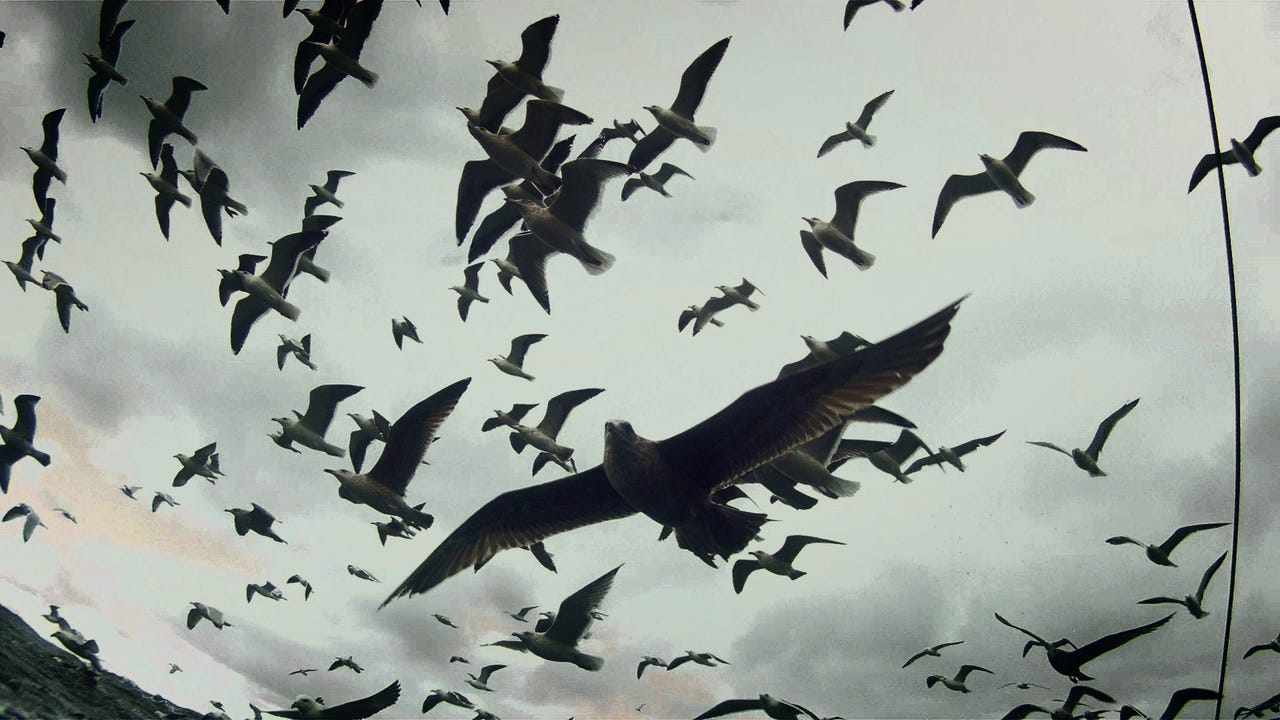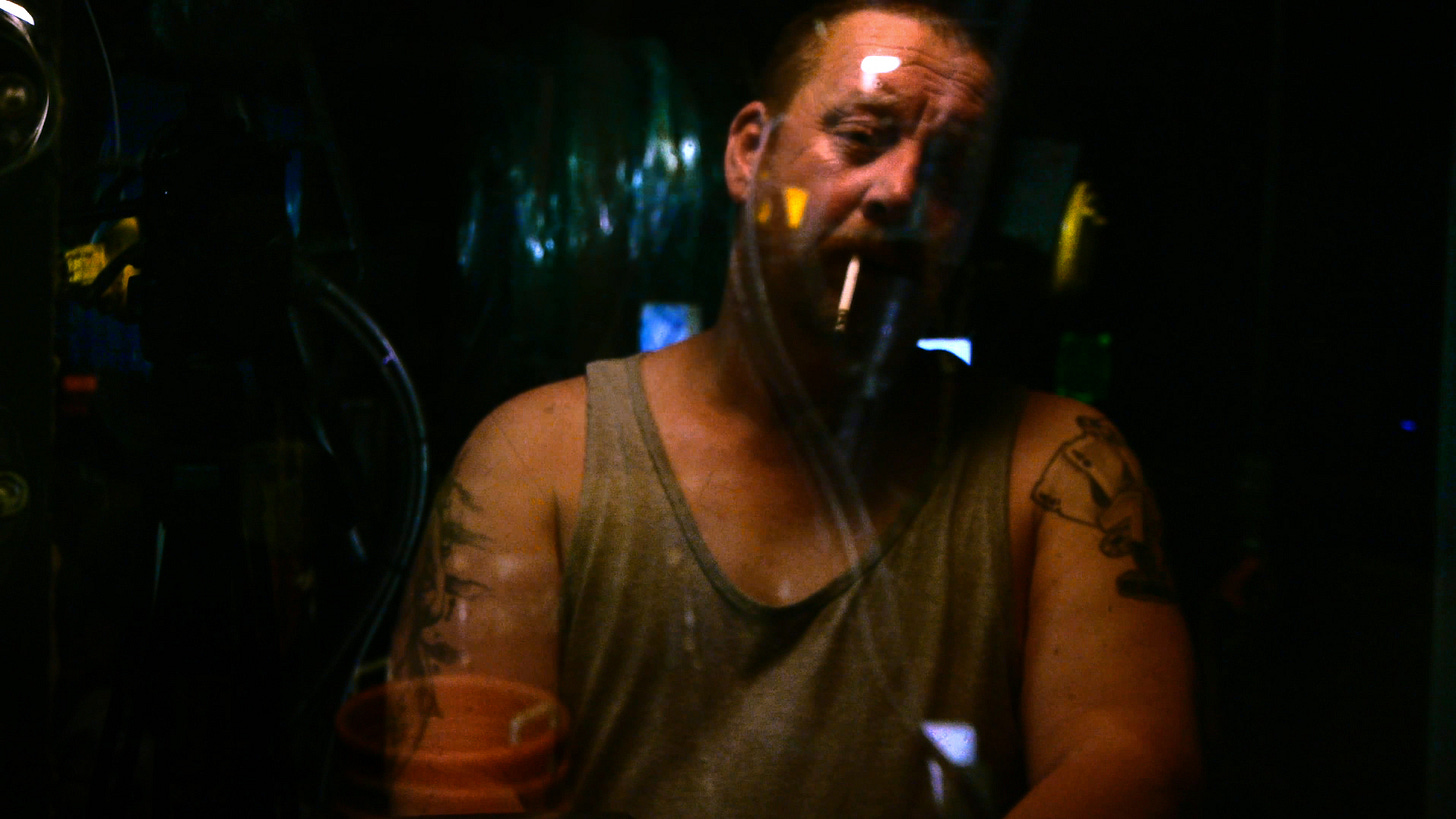Leviathan (2012)
“Consider the subtleness of the sea; how its most dreaded creatures glide under water, unapparent for the most part, and treacherously hidden beneath the loveliest tints of azure. Consider also the devilish brilliance and beauty of many of its most remorseless tribes, as the dainty embellished shape of many species of sharks. Consider, once more, the universal cannibalism of the sea; all whose creatures prey upon each other, carrying on eternal war since the world began.” - Moby Dick, Chapter 58
Leviathan, directed by European anthropologists Lucien Castaing-Taylor and Véréna Paravel, is a product of Harvard’s Sensory Ethnography Lab, a department that aims to create ethnographic films that are not as staid as the ones that typically get shown in classroom. Other films that came out of this branch include Sweetgrass, a solo project for Castaing-Taylor, which follows a family of shepherds in the Montana mountains who among the last in America to still guide their flock across the mountains on foot; and Manakama, a real endurance test that consists of a series of static long takes, following a series of pilgrims taking the cable car up to the Manakama Temple, a Hindu temple high up in the wilds of Nepal. I’ll admit I only made it about 30 minutes of the way through Manakama before being lulled into a deep sleep, but I think I got the gist. Neither of these films have any extraneous narration, and are observational to a fault. Superficial comparisons could be made to the documentary films of Werner Herzog, but Herzog’s documentaries almost all feature his Teutonic growl, and clear protagonists, who are often eccentrics with impossible dreams. This is a far cry from the Lab’s output, which are so minimalist that the people in the films rarely talk at all, nor is there any identification given to them. Now, compare these films to other, more traditional ethnographic films. Most ethnographic films are, at their best, objective recordings of peoples whose culture would otherwise vanish without any recording beyond field notes, and at their worst, present native people as savages whose traditions should be feared and documented only as a warning. The Lab manages to avoid both ends of this spectrum, and create films where the environment itself is the culture being documented, and the people just elements of a larger, more indescribable force. Leviathan is the most pure form of this idea- the deep blue sea is its subject.
Shot on an armada of go-pros, Leviathan invites us to be passengers on a deep-sea fishing ship, setting sail on a voyage into the briny deep. The ocean is abstracted to the point of otherworldly horror; the wine-dark sea becomes an impenetrable abyss, from which there is no escape. Digital artifacting from the cameras cloak the frame in a pixelated haze of sickly greens and reds, furthering the alien landscape, showing us colors that are impossible to see in nature. The film largely consists of long takes, any movement motivated by the swaying of the ship or the gyrations of the body the cameras are strapped to. What editing there is, is so smooth that you often don’t notice that cut has even been made (the water blurred lenses make this easier). Thus, any cuts from the ship to the ocean are extra jarring. We experience, in intimate detail, the work that goes on one of these ships, seen from the perspective of the crew, the rusted equipment, and occasionally the sea itself. Since the crew was given free rein to place the cameras wherever they liked, there’s a sui generis feel to many of the shots. Most filmmakers probably wouldn’t put the camera in a place where it’s at risk of being suffocated by a tsunami of ensured fish, but we get that here, and it only serves to further the disorientation.
There’s no contextualizing narration, but we faintly hear a distorted chorus of waterlogged voices, bantering and instructing one another to various degrees of intelligibility. We rarely see the speakers, but when we do, the film largely frames them in extreme closeup, choosing to focus on their scars and nautically themed tattoos, rather than their weather-beaten faces. On the occasions we do see their full bodies, it’s often from an unnatural angle. In one of the only scenes where we get a straight-ahead look at one of the fishermen, we watch him watch, with rapt disinterest, Deadliest Catch, until he eventually nods off. The bombastic musical stings and dramatic voiceover of the show provide a stark contrast to the gritty surrealism of Leviathan.
“Leviathan,” as a word, is a short-hand for sea monster, and although we don’t see any great and terrible serpents rising from the depths, the ship itself is something of a mechanical Beast of Revelation, wreaking havoc upon the ocean. Although we see many instances of marine life, they’re never swimming free. Rather, they are ensnared in the nets trawling behind the ship, dragged up into the belly of the beast. One particularly nightmarish sequence, a POV shot inside a mass of fish, many still writhing, being gutted, had me questioning my life-long pescatarianism. The flocks of seagulls that perennially follow the ship, white flecks on the inky sky, provide some of the only light in this impenetrable darkness, and are the only creatures who have their freedom. Whenever the runoff blood and guts are dumped into the ocean, we see them swarming and diving into the sea, taking advantage of the ruthless plunder of their home. In one particularly moving scene, one of the birds lands on the ship, and we see it waddle around, and try, futility, to hop over a small barrier to get to the desiccated fish corpses just beyond. Unable to get a foothold on the sleek metal, and its wings seemingly too drenched to fly, it resigns itself, and walks back into the ocean, its fate unknown.
Although there is no musical score (with one brief exception of a hardcore punk song blasting from a tinny speaker in the lower decks), that doesn’t mean there isn’t a soundtrack. Everything from the waves crashing against the ship, to the mechanical whirs and creaks of the equipment, to the whooshing of the gale force winds, creates a uniquely disquieting soundscape, oscillating between awe and terror. When heard from underwater, the grinds and groans of the pulleys turn into a plaintive moan, as if the ocean itself was crying out for its lost children.
In the final shot of the film, we find ourselves returned to the ocean, bobbing in and out of the water, but this time the camera has fallen upside down, and we see the flocks of seagulls diving into the water, but from our vantage point, they seem to be rising. One of the few consistently recognizable images in the film has become disorienting- the seagulls now look like some sort of unknown flying objects. The water is so dark that when the film does end, we are left with a few seconds of uncertainty, wondering if the birds will return, or if we’ve finally exited this watery grave we’ve been submerged in for the past 85 minutes. Once the credits roll, we are given both the names of the ship’s crew, and the scientific names of the marine life being caught, intermingled under the same “WITH” heading. We all came from the sea, and one day, we will return there. The ocean subsumes us all in the end.



